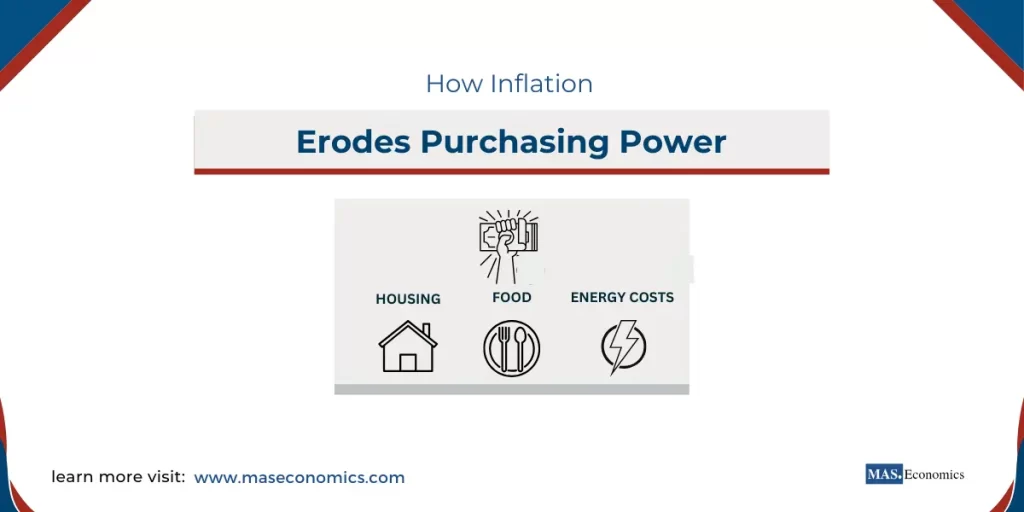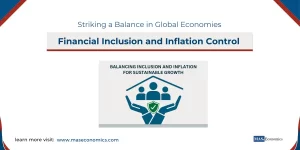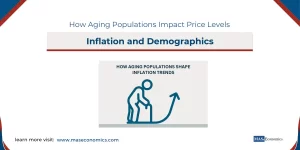Inflation is often described as the silent thief of wealth, gradually eroding purchasing power and reducing households’ ability to afford the same basket of goods and services over time. Commodities like food, housing, and fuel are among the most significantly impacted, making it essential to understand their price dynamics. Examining how inflation affects purchasing power through key commodities such as these offers valuable insights for consumers, policymakers, and investors.
The Changing Basket of Goods
One of the essential tools used to measure inflation is the Consumer Price Index (CPI), which represents the changing cost of a “basket” of goods and services that households commonly purchase. The basket is periodically updated to reflect the current consumer landscape, adding new items as they gain popularity and removing outdated ones. This evolution not only provides a snapshot of changing consumer preferences but also reveals broader economic shifts.
The Consumer Price Basket and Commodities
The 2022 CPI basket contained about 730 items, including staple commodities such as milk, bread, and housing-related products like curtains. New items, like meat-free sausages, were added to reflect rising health consciousness and changing dietary preferences, while items like men’s suits were removed due to declining demand. These shifts are indicative of evolving consumption habits, and inflation affects these commodities differently, depending on market dynamics, price stickiness, and demand elasticity.
Food: Inflation’s Impact on Essential Commodities
Food is perhaps the most visible area where inflation erodes purchasing power. Given that food constitutes a substantial part of household expenditure, particularly for low-income families, rising food prices can severely impact the ability of families to maintain their standard of living.
Historical Trends in Food Expenditure
In the early 20th century, food made up about 60% of household spending, a figure that gradually fell as economies developed. By 1970, it accounted for 25% of expenditure, dropping to 11% by 2004. However, despite the decrease in the relative proportion of spending on food, recent inflation spikes have shown how quickly food prices can become a burden again.
For example, in 2022, staples like milk, cheese, and eggs experienced double-digit price increases, driven by supply chain issues and increased production costs. Milk, specifically, went from £0.85 for two pints in 2021 to £1.25 by late 2022—a stark increase impacting millions of households. This type of price movement highlights inflation’s regressive impact, as lower-income households spend a larger portion of their income on essentials like food.
Understanding Price Stickiness and Food Commodities
One characteristic of food commodities during inflation is price stickiness. Some items, such as bread and milk, exhibit lower price elasticity because they are essential. This means that even when prices rise, consumers have no choice but to continue purchasing them, leading to a direct reduction in purchasing power. For example, the increase in milk prices during 2022 was driven by factors such as higher transportation and animal feed costs, which ultimately were passed on to the end consumer.
Another factor influencing food prices is the volatility of commodity inputs. The prices of grains like wheat and corn are susceptible to global market changes, and disruptions—like the geopolitical tensions between Russia and Ukraine—can lead to sudden price hikes. Such increases have a cascading effect on products like bread, cereal, and livestock feed, which further contribute to inflation in related food categories.
Housing: Inflation and the Cost of Shelter
The impact of inflation on housing costs is multifaceted, affecting both homebuyers and renters. Housing is a significant component of the CPI basket, reflecting the ongoing expenditures related to owning, maintaining, and renting a home. Inflation influences this sector primarily through construction costs, rental prices, and mortgage interest rates.
Rising Rental Costs
For renters, inflation often translates into rising rents. With increased property management costs—such as maintenance, utilities, and taxes—landlords may raise rent prices to maintain their margins. In cities, where housing demand often exceeds supply, inflation-driven rent hikes can significantly outpace general inflation rates, placing additional pressure on household budgets.
Historically, rental prices have been one of the most consistent contributors to inflation. Data from the CPI basket show that housing-related expenditures have been increasing as a share of household spending, particularly during periods of economic stress. In recent years, rental inflation has been exacerbated by supply constraints and rising property values, with a notable spike during the pandemic recovery phase.
The Burden on Homebuyers
For those looking to buy a home, inflation manifests through rising interest rates and construction costs. Central banks often raise interest rates to combat inflation, which in turn makes mortgages more expensive. Higher interest rates mean that potential buyers must either pay significantly more in interest over the life of their loans or settle for smaller or less desirable properties.
Additionally, the cost of building materials like lumber and steel can rise sharply during inflationary periods. These materials are key inputs in residential construction, and price increases are usually passed on to consumers, making new homes more expensive. The result is a double-edged sword: not only do rising interest rates make borrowing more costly, but the price of constructing or buying a home also escalates, diminishing affordability.
Energy Costs: Fuel and Electricity
Energy prices play a crucial role in determining the overall inflation experienced by consumers, as they have a direct impact on both production costs and household expenses. Energy commodities, including gasoline and natural gas, are highly susceptible to inflationary pressures, often contributing significantly to headline inflation.
Gasoline and Transportation
Gasoline prices are among the most visible indicators of inflation. When inflation affects the price of crude oil, the effects quickly filter down to consumers through higher prices at the pump. This increase in transportation costs doesn’t only impact individual car owners—it also affects businesses, leading to increased distribution costs and higher prices for consumer goods. During inflationary periods, individuals with long commutes or businesses relying heavily on logistics are particularly vulnerable to these price changes.
Electricity and Heating
Electricity prices are also sensitive to inflationary pressures, particularly when input costs—such as natural gas—rise. The 2022 energy crisis highlighted the vulnerability of consumers to electricity price inflation. Households relying on natural gas for heating saw their energy bills soar, leading to widespread calls for government intervention and subsidies. The volatility of energy prices means that inflation can disproportionately affect households based on their energy needs, geographical location, and ability to insulate their homes from extreme temperatures.
Strategies to Mitigate Inflation’s Impact on Commodities
For many households, mitigating the impact of inflation on purchasing power involves adjusting spending behaviors and adopting new strategies for managing finances. Here are some approaches that have historically helped consumers navigate inflationary pressures:
Substituting Goods
When faced with rising prices for specific food items, consumers may switch to less expensive alternatives. For instance, during times of rising meat prices, families may choose more affordable sources of protein, such as beans or lentils. However, the extent to which substitution is possible depends on the elasticity of demand for these goods and cultural preferences.
Energy Efficiency
In response to rising energy prices, many households opt to make their homes more energy-efficient. Measures such as installing better insulation, adopting energy-efficient appliances, and using smart thermostats can help reduce energy consumption, thus mitigating the impact of rising prices.
Long-Term Fixed Rates for Housing
Locking in a fixed mortgage rate during periods of low interest rates can provide stability in housing costs, insulating homeowners from the effects of future rate hikes. Renters might also negotiate longer-term leases to protect against annual rental increases during inflationary periods.
The Broader Economic Implications of Eroding Purchasing Power
The erosion of purchasing power due to inflation doesn’t just impact individual households—it also has broader economic consequences. As households spend more of their income on essential goods and services, less income is available for discretionary spending. This reduction in discretionary spending can lead to a slowdown in economic growth, particularly in sectors reliant on consumer spending, such as retail and entertainment.
Moreover, when purchasing power is eroded significantly, the effects on income inequality can become pronounced. Lower-income households, which spend a larger share of their earnings on necessities like food, rent, and energy, bear the brunt of inflation. The need for effective government intervention—such as subsidies, direct cash transfers, or tax breaks—becomes crucial in mitigating the social impacts of inflation on vulnerable populations.
Conclusion
Inflation is a complex force that affects different aspects of life in unique ways. When it comes to commodities like food, housing, and energy, inflation directly erodes purchasing power, making it more challenging for households to afford the same quality of life over time. The evolving consumer price index basket is a reflection of these changes, highlighting which commodities are most impacted by inflation and how consumer preferences shift in response.
Understanding the mechanisms through which inflation influences purchasing power is critical, not only for consumers trying to protect their budgets but also for policymakers aiming to cushion the effects of inflation on the most vulnerable.
FAQs:
How does inflation affect purchasing power?
Inflation reduces purchasing power by increasing the prices of goods and services, meaning that over time, households need more money to buy the same items. This erosion particularly affects essential commodities like food, housing, and energy, making it harder for consumers to maintain their standard of living.
Why are food prices especially sensitive to inflation?
Food prices are highly sensitive to inflation because they are influenced by volatile factors such as supply chain disruptions, global commodity prices, and increased production costs. Essential food items exhibit price stickiness, meaning consumers continue purchasing them even as prices rise, which directly impacts household budgets.
How does inflation impact housing costs?
Inflation affects housing costs through rising rents, higher construction costs, and increased mortgage interest rates. Renters face more significant financial pressure as landlords pass on higher costs, while prospective homebuyers contend with both pricier homes and more expensive borrowing costs due to elevated interest rates.
What role do energy prices play in inflation?
Energy prices are a major driver of inflation, impacting both household energy bills and the broader economy. Rising fuel and electricity costs increase production and transportation expenses, which businesses often pass on to consumers. This creates a ripple effect, leading to higher prices across various sectors.
How can consumers mitigate the impact of inflation on their budgets?
Consumers can mitigate inflation by substituting expensive goods with cheaper alternatives, improving energy efficiency in their homes, and locking in long-term fixed rates for housing or loans. These strategies help manage costs and reduce the financial strain caused by rising prices.
What are the broader economic implications of eroding purchasing power?
Eroding purchasing power reduces discretionary spending, slowing economic growth in non-essential sectors like retail and entertainment. It also exacerbates income inequality, as lower-income households spend a larger portion of their income on necessities and are disproportionately affected by rising prices.
Why is the Consumer Price Index (CPI) important in understanding inflation?
The CPI tracks the average change in prices of a basket of goods and services over time, reflecting the impact of inflation on consumer expenses. By monitoring CPI, policymakers and consumers can better understand how inflation is affecting different commodities and make informed financial and policy decisions.
How do changing consumer preferences impact the CPI basket?
The CPI basket is updated periodically to reflect evolving consumer habits, adding new goods that gain popularity and removing outdated items. These changes ensure that the index remains relevant, accurately capturing the cost of living and the impact of inflation on contemporary consumption patterns.
Thanks for reading! Share this with friends and spread the knowledge if you found it helpful.
Happy learning with MASEconomics




